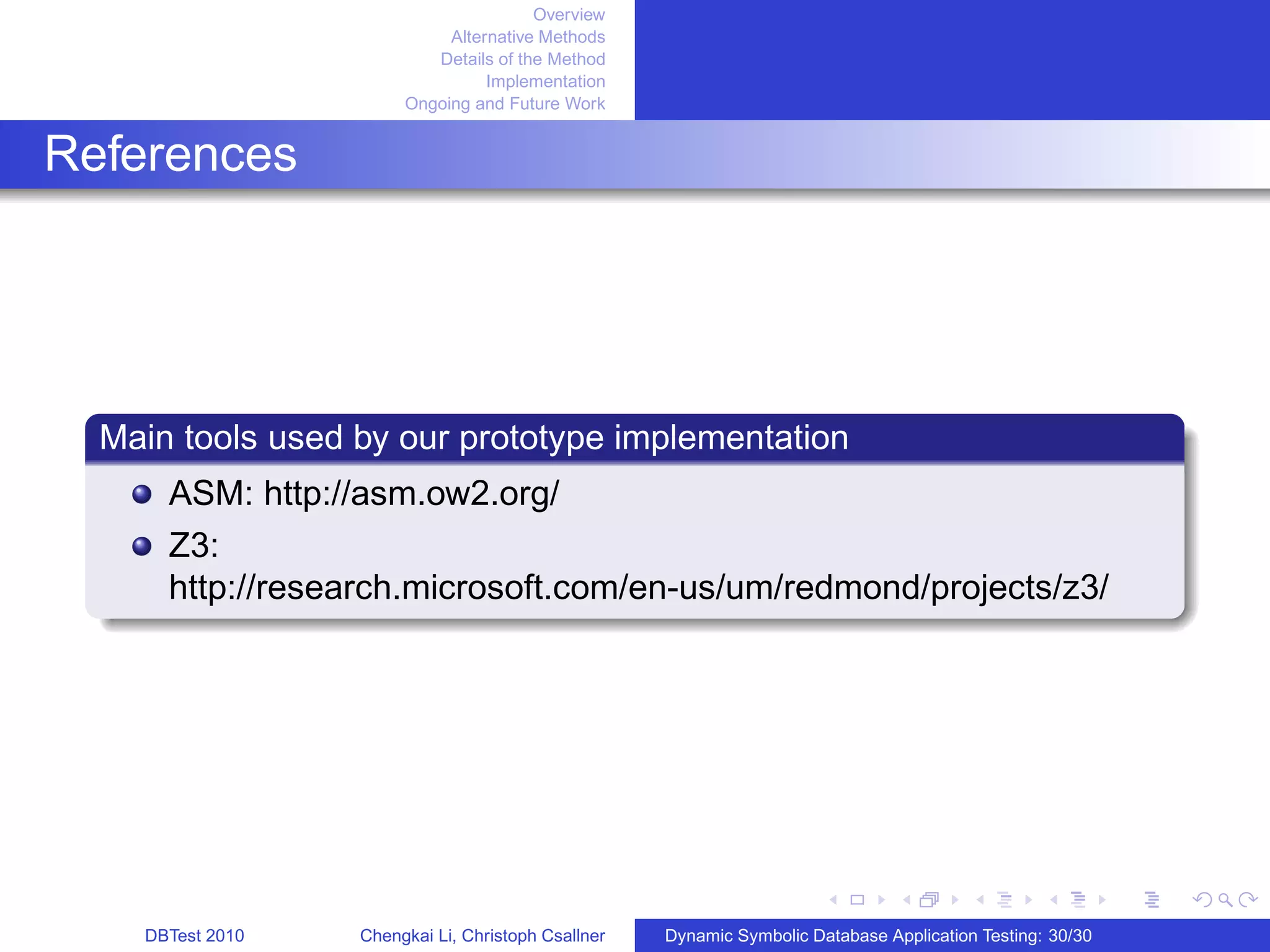The document outlines a method for dynamic symbolic database application testing developed by Chengkai Li and Christoph Csallner at the University of Texas at Arlington. This method aims to maximize code coverage by dynamically generating queries through the inversion of branching conditions during program execution. It contrasts with traditional database testing techniques, emphasizing real data use over mock databases and static analysis.
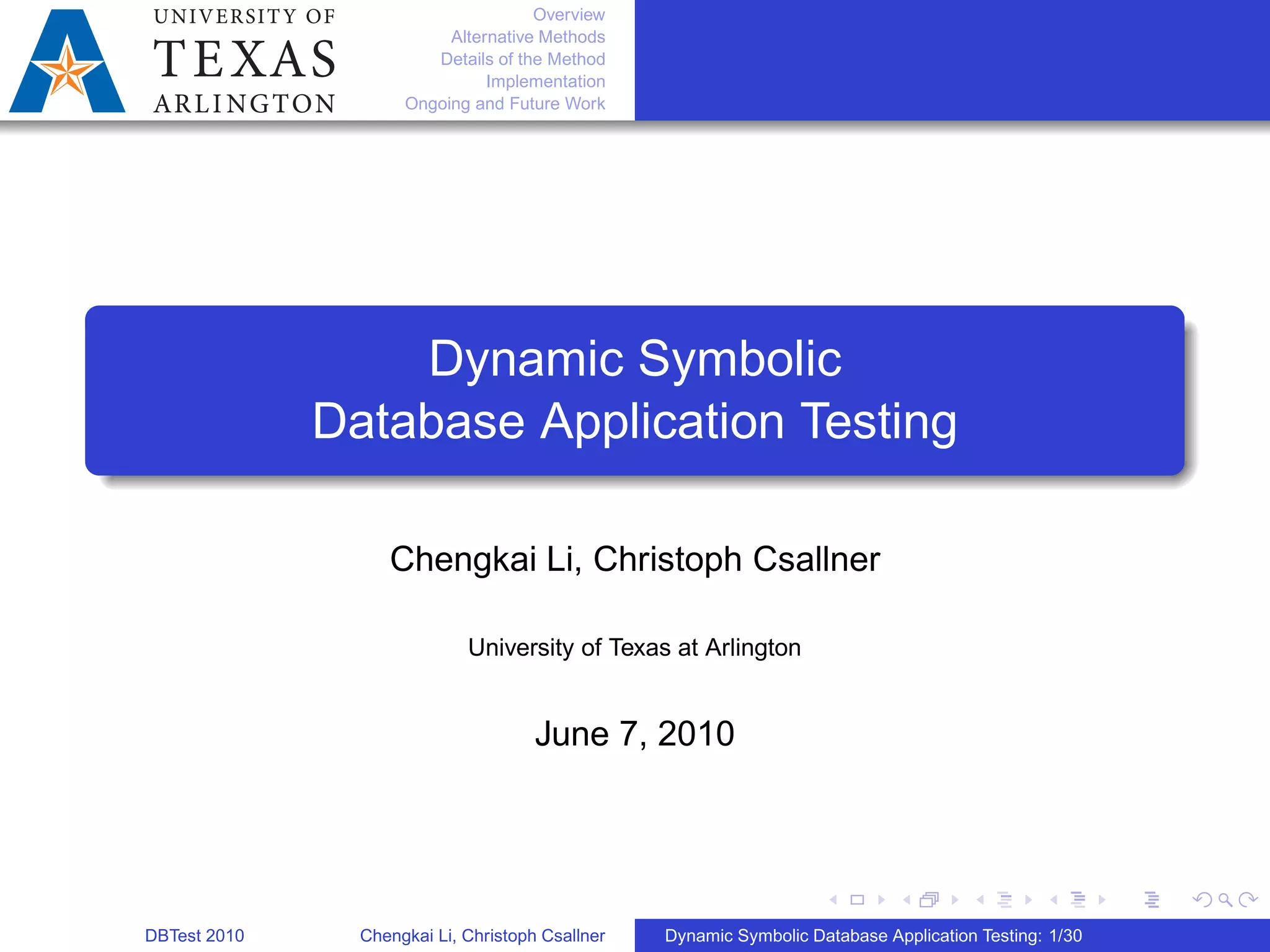
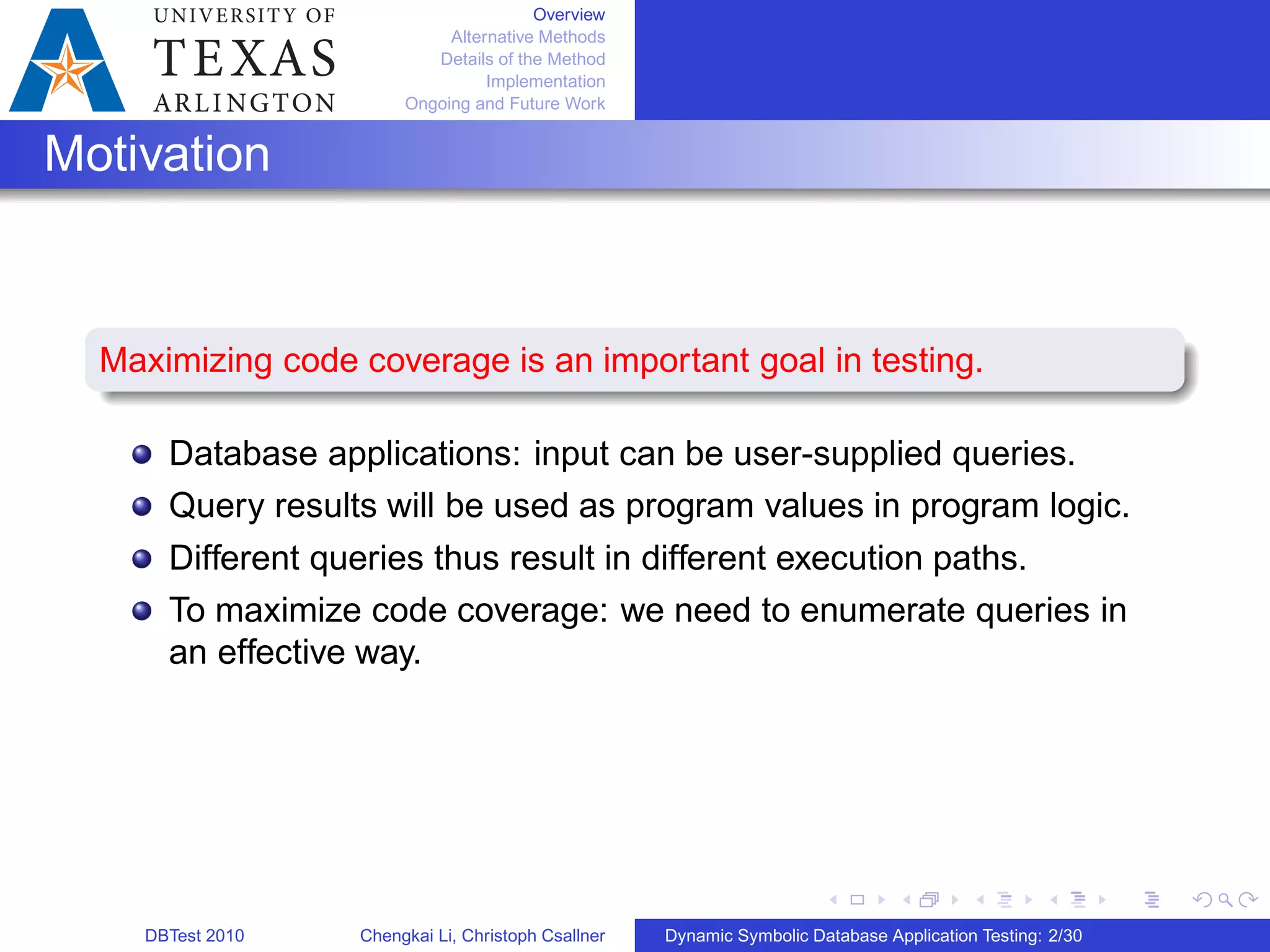
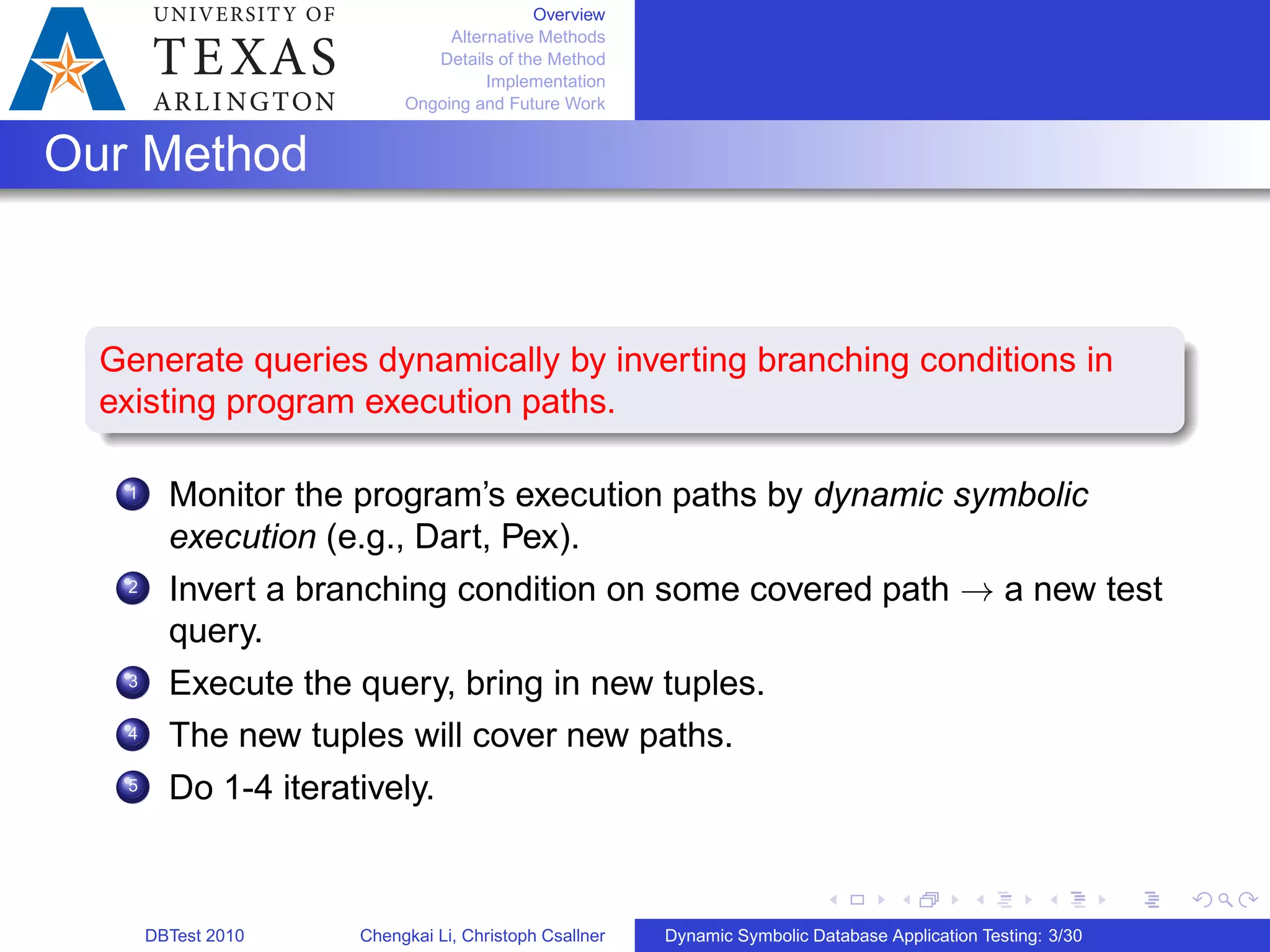
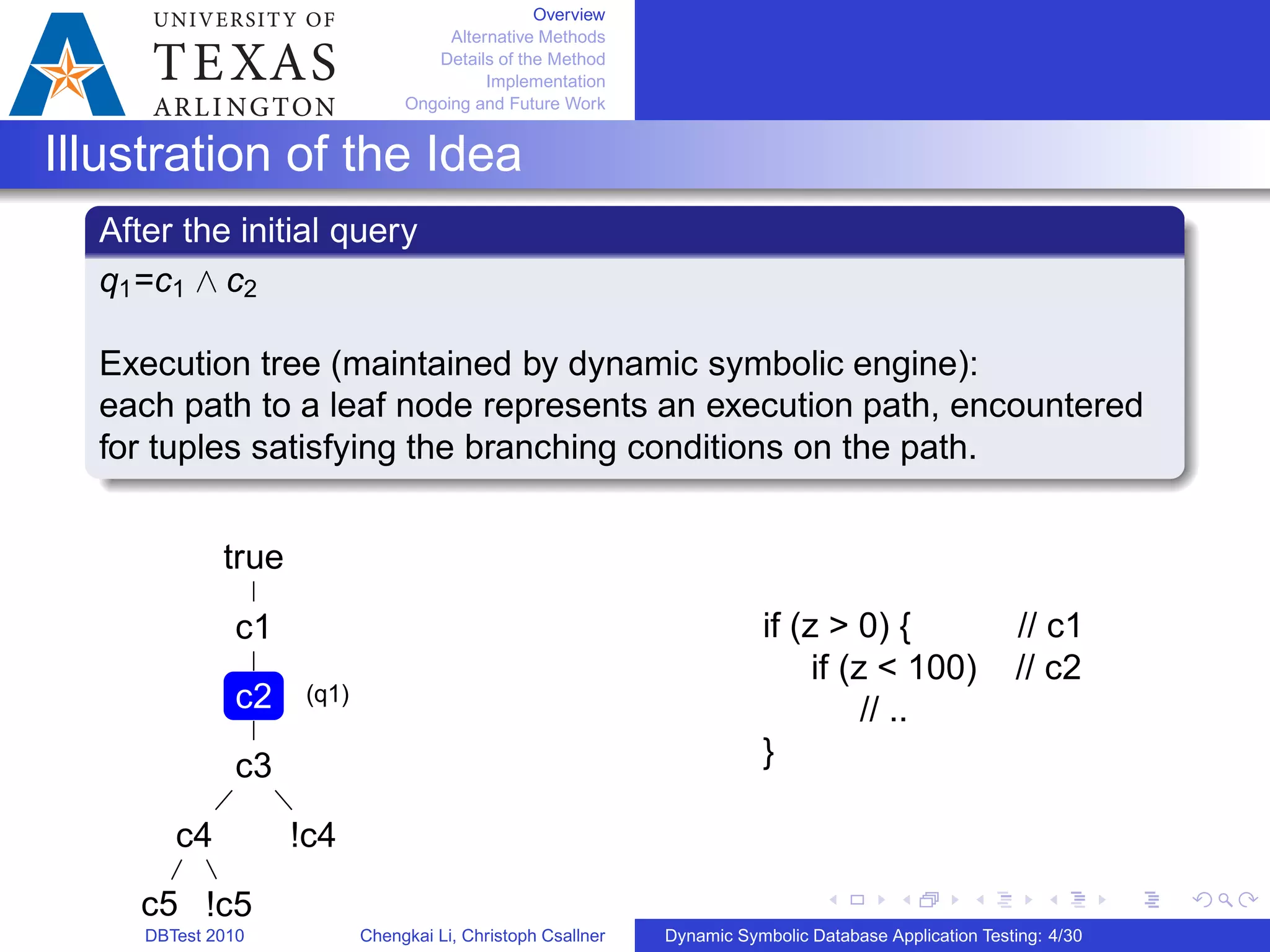
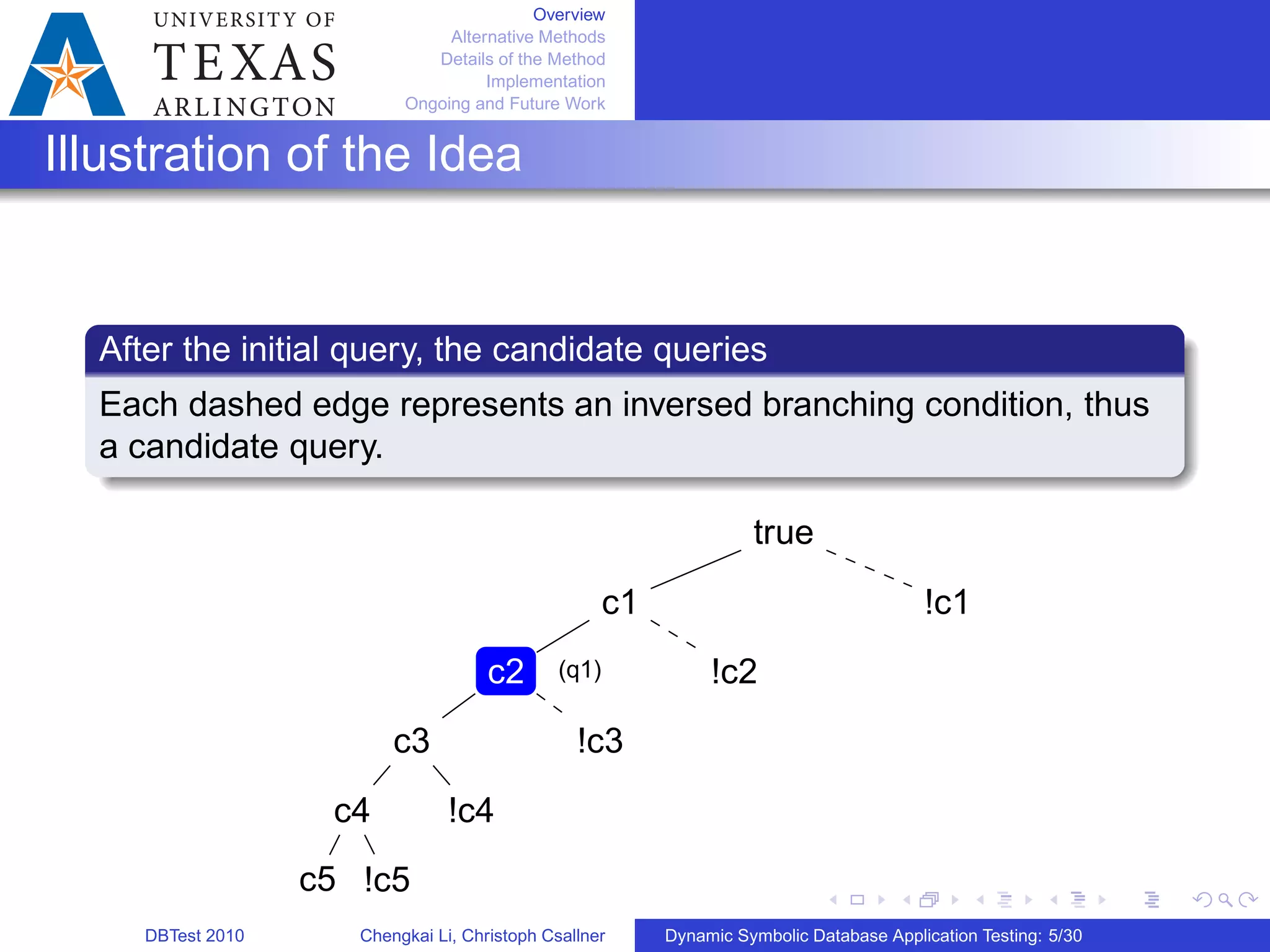
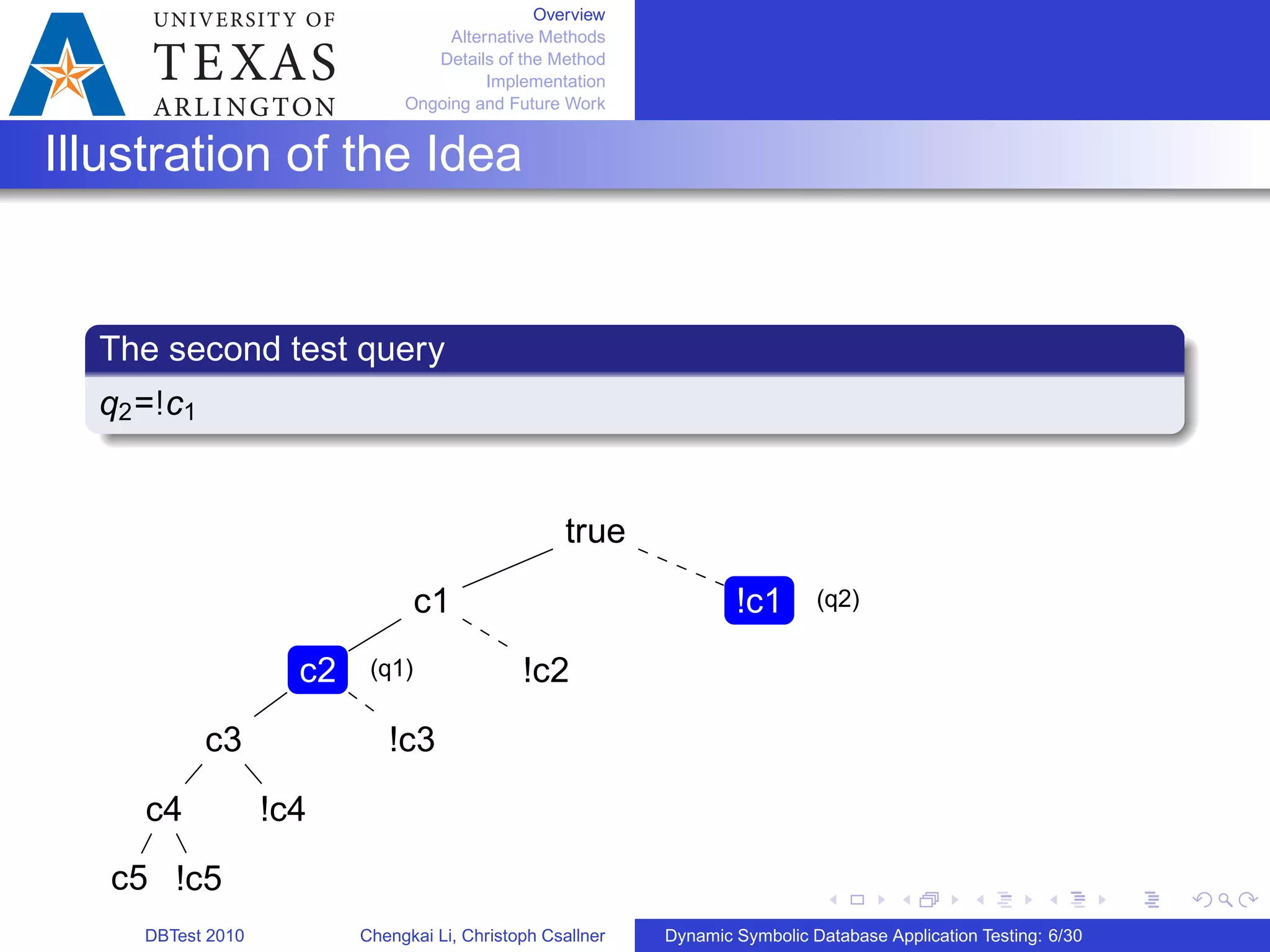
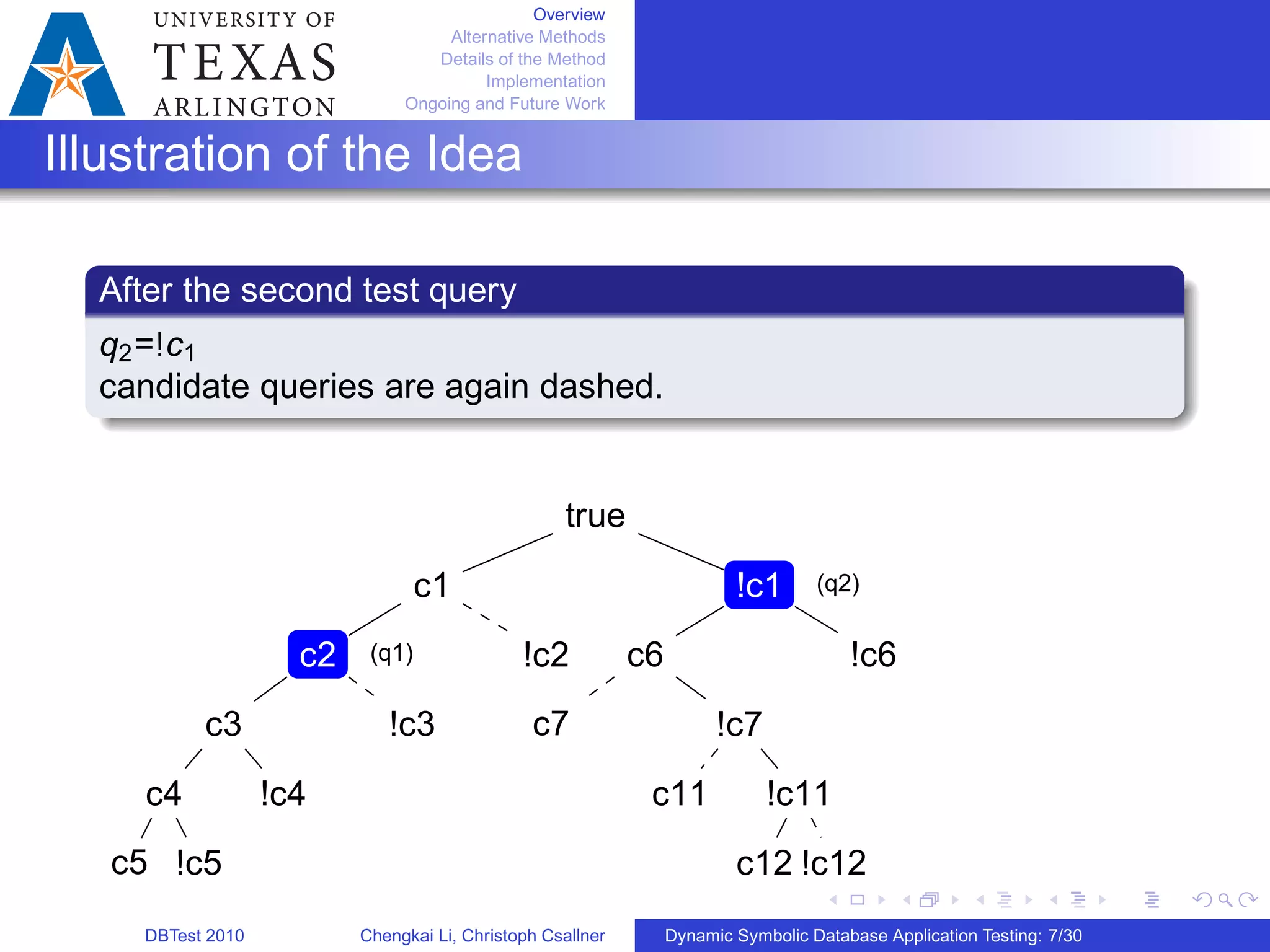
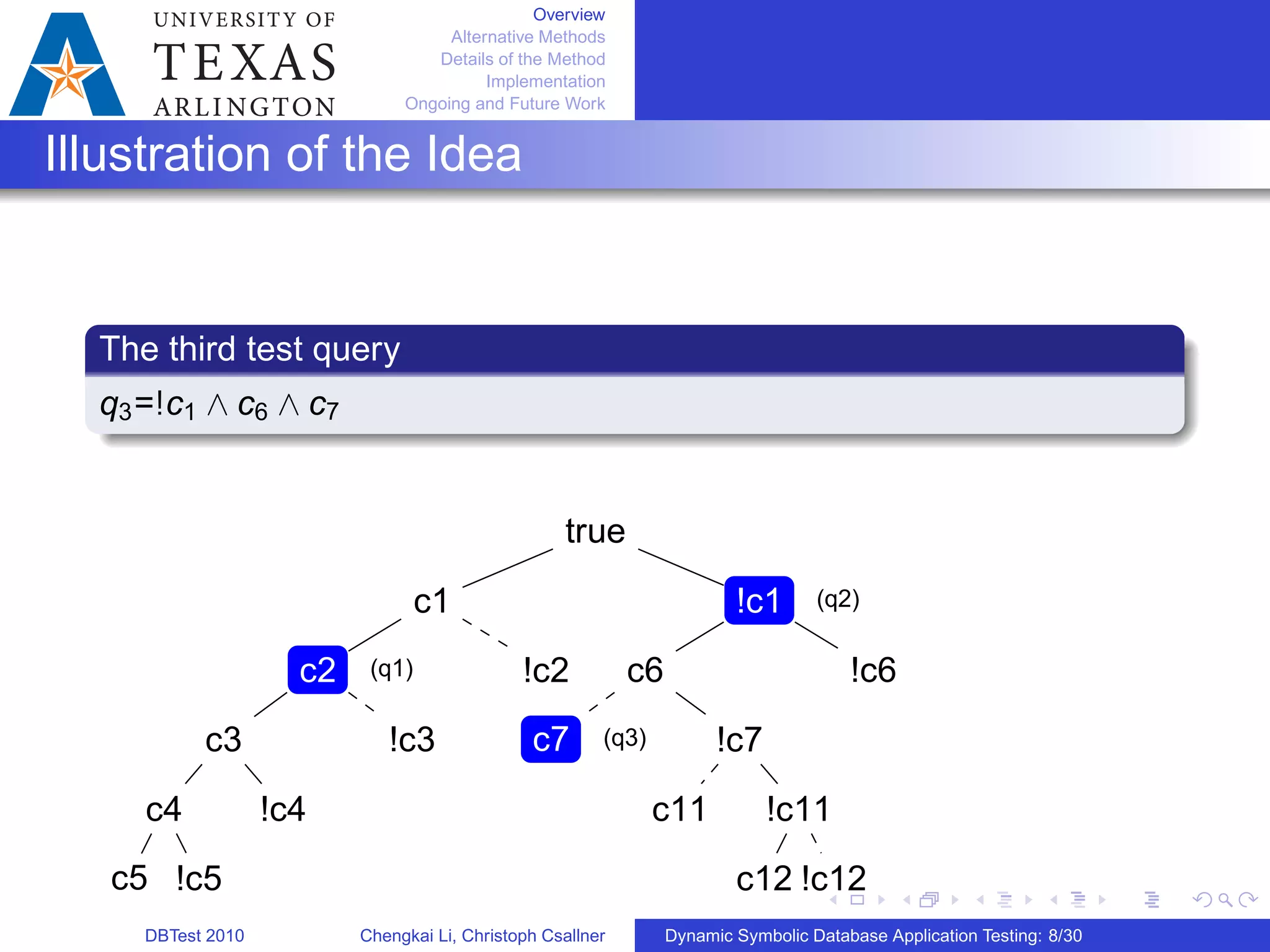
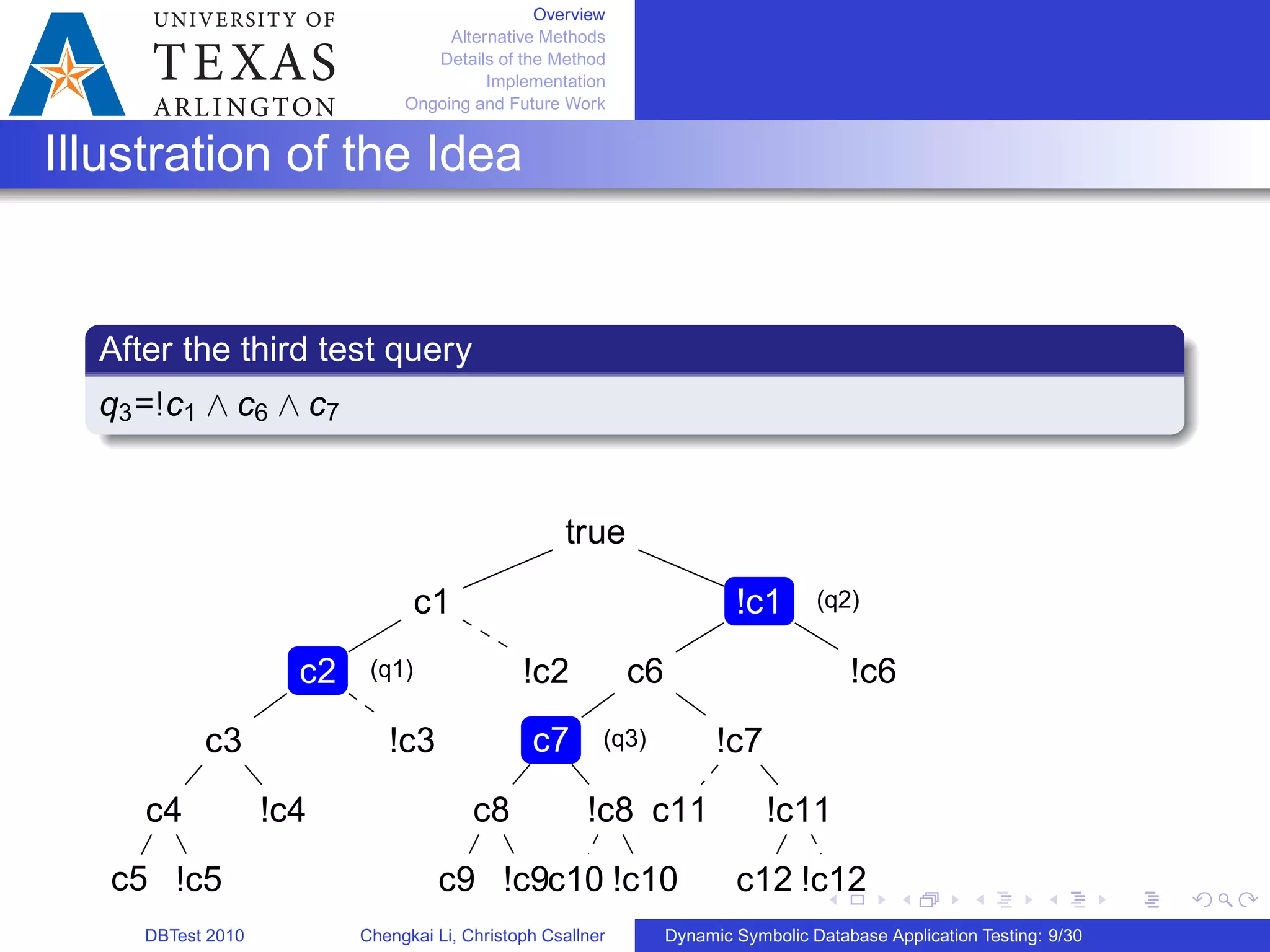
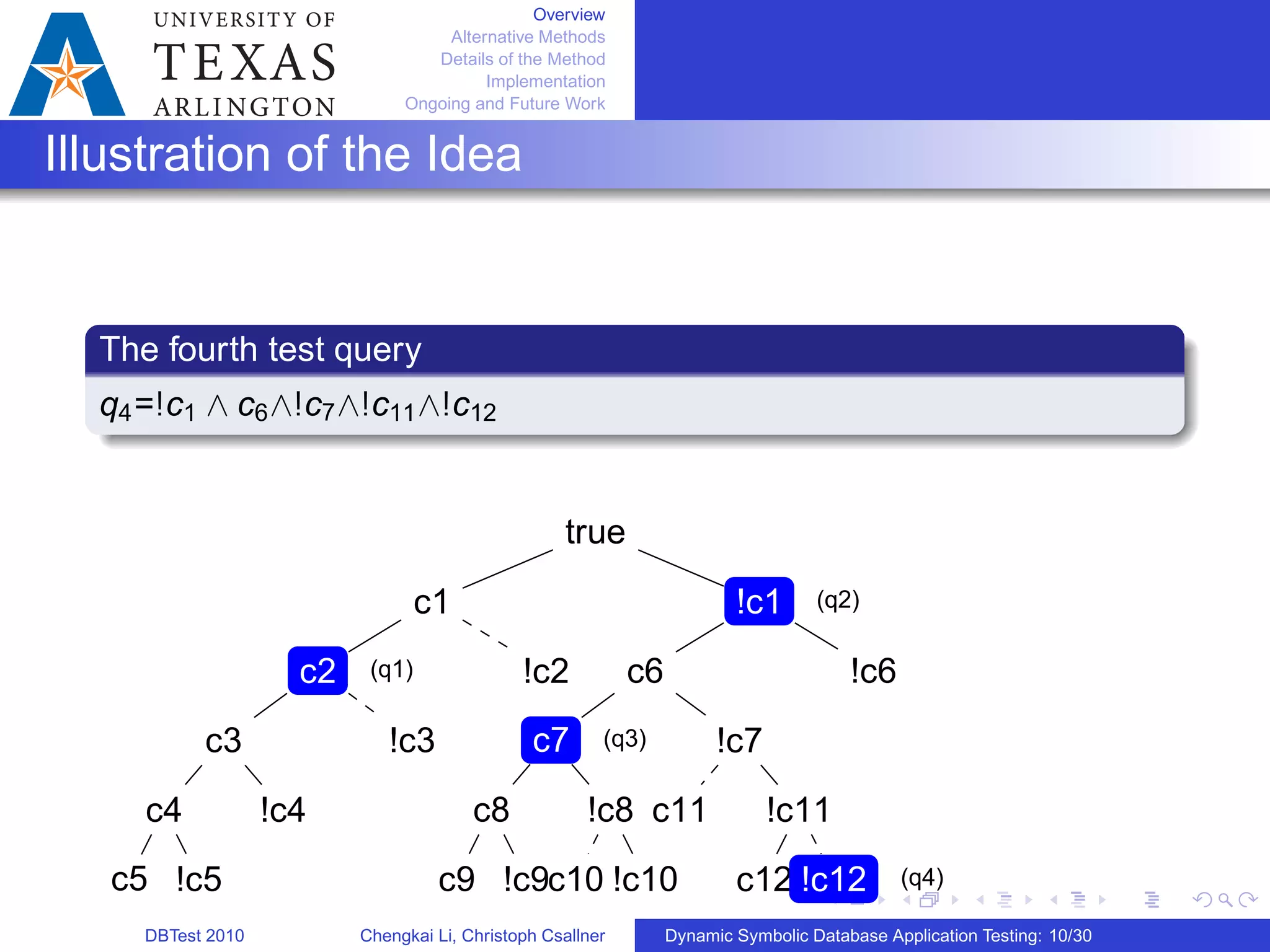
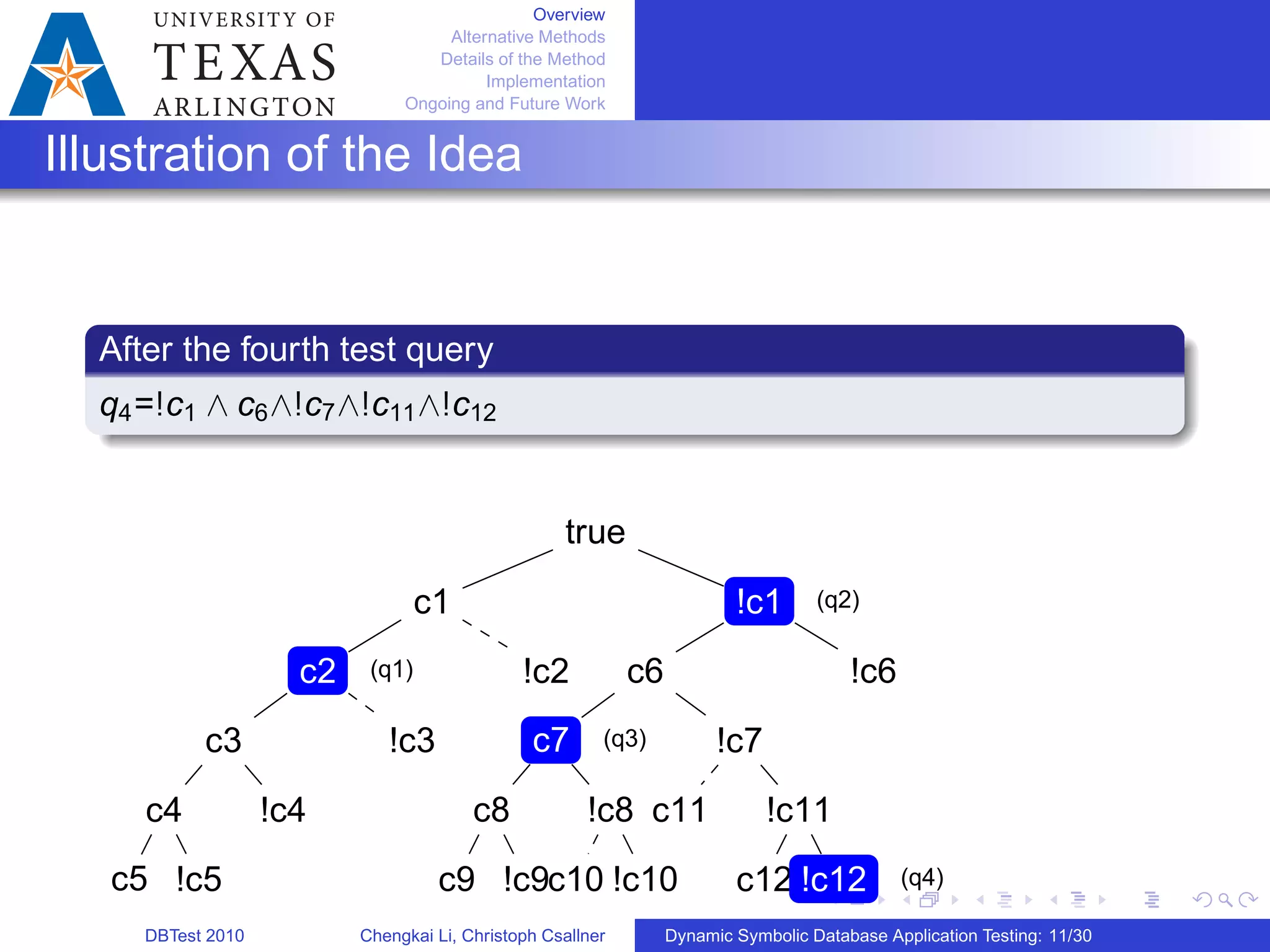
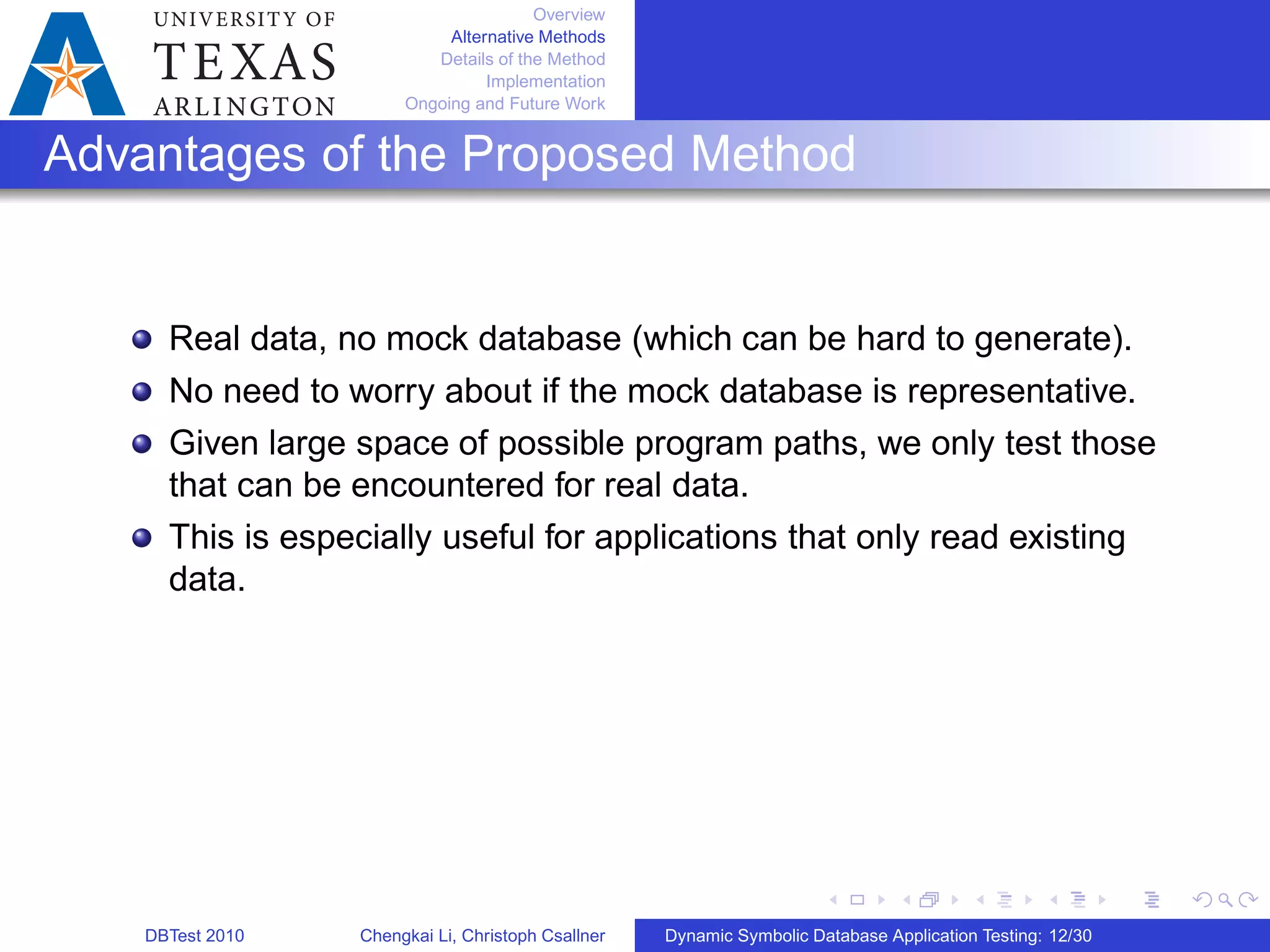
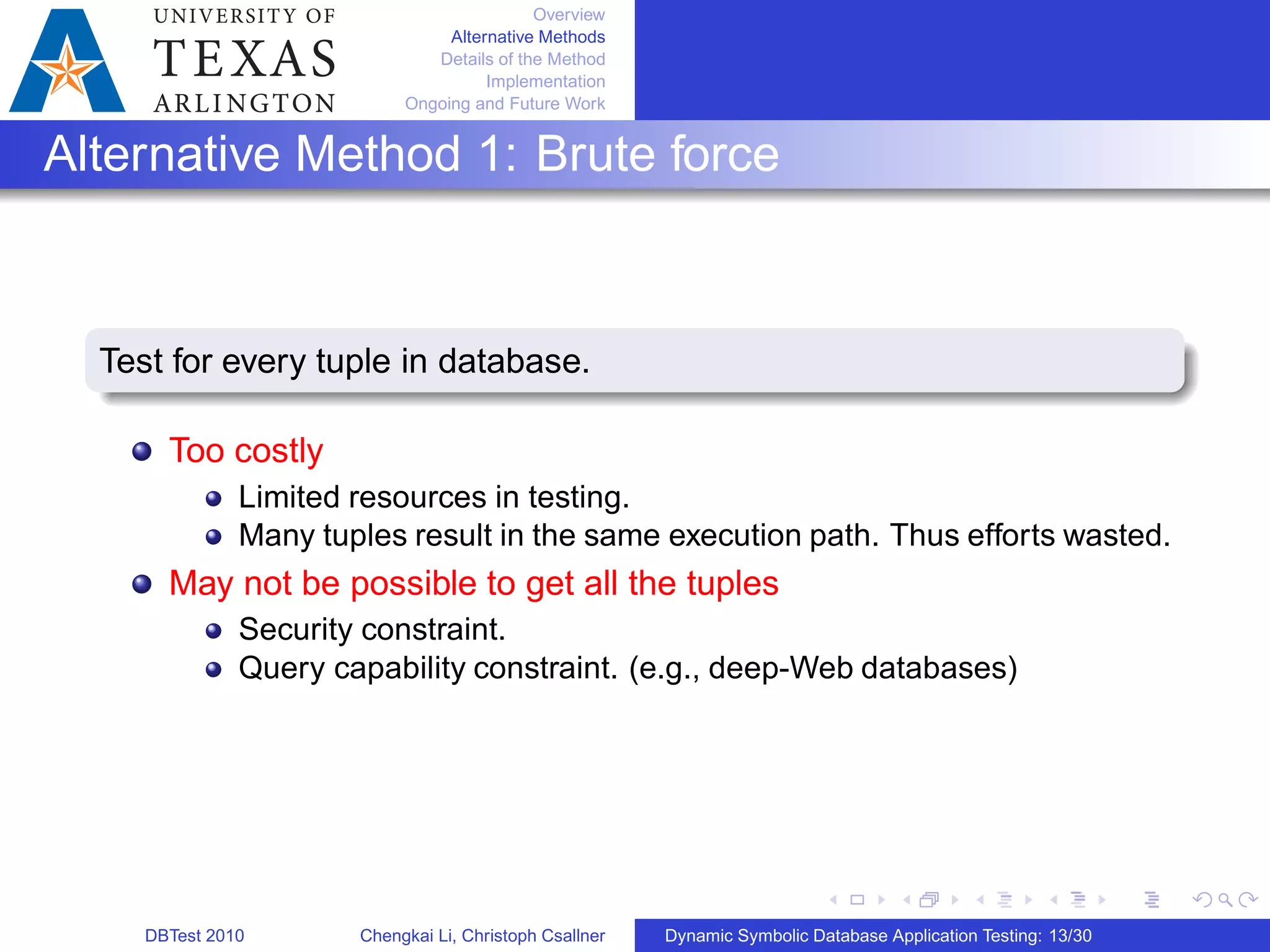
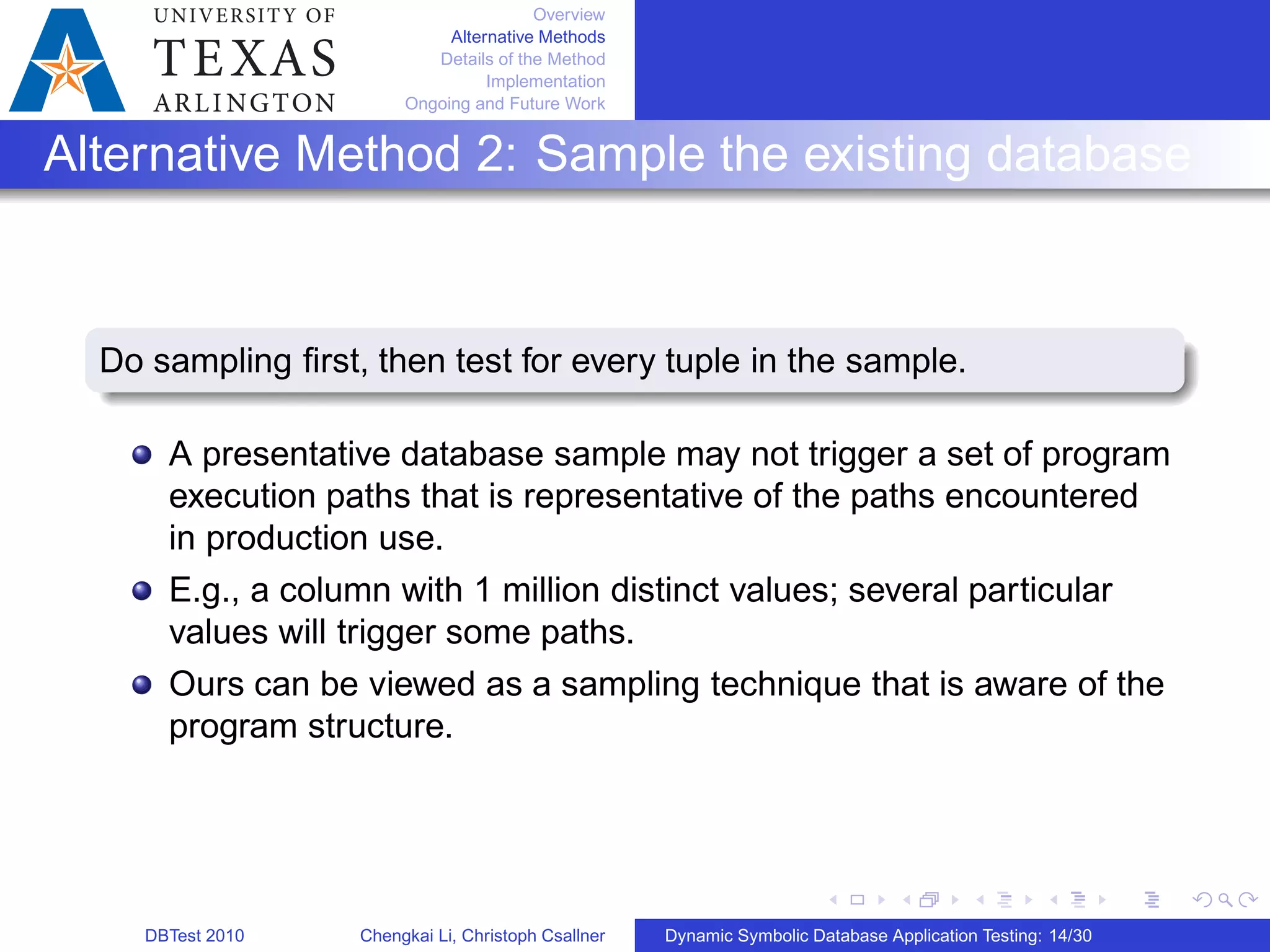
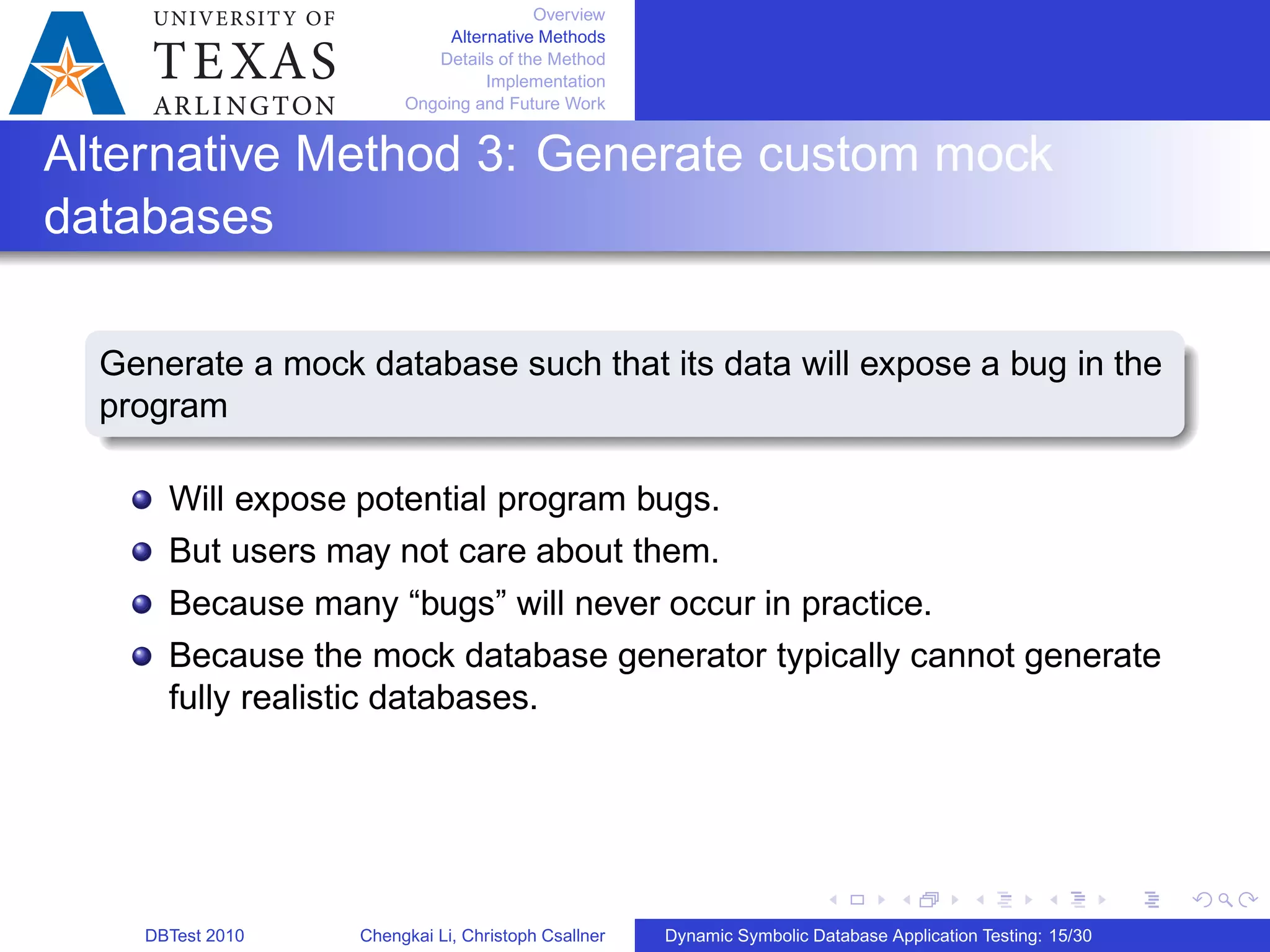
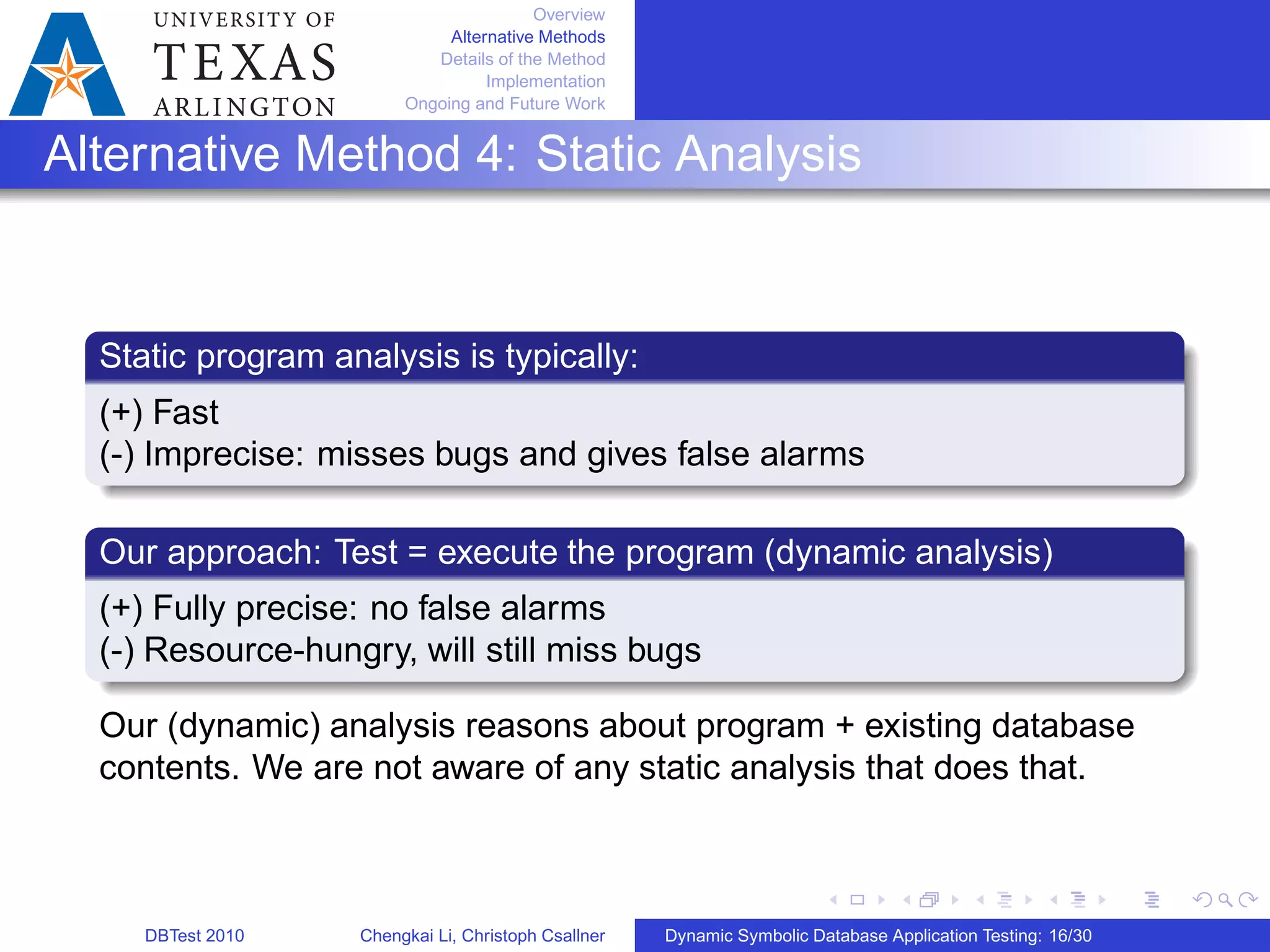
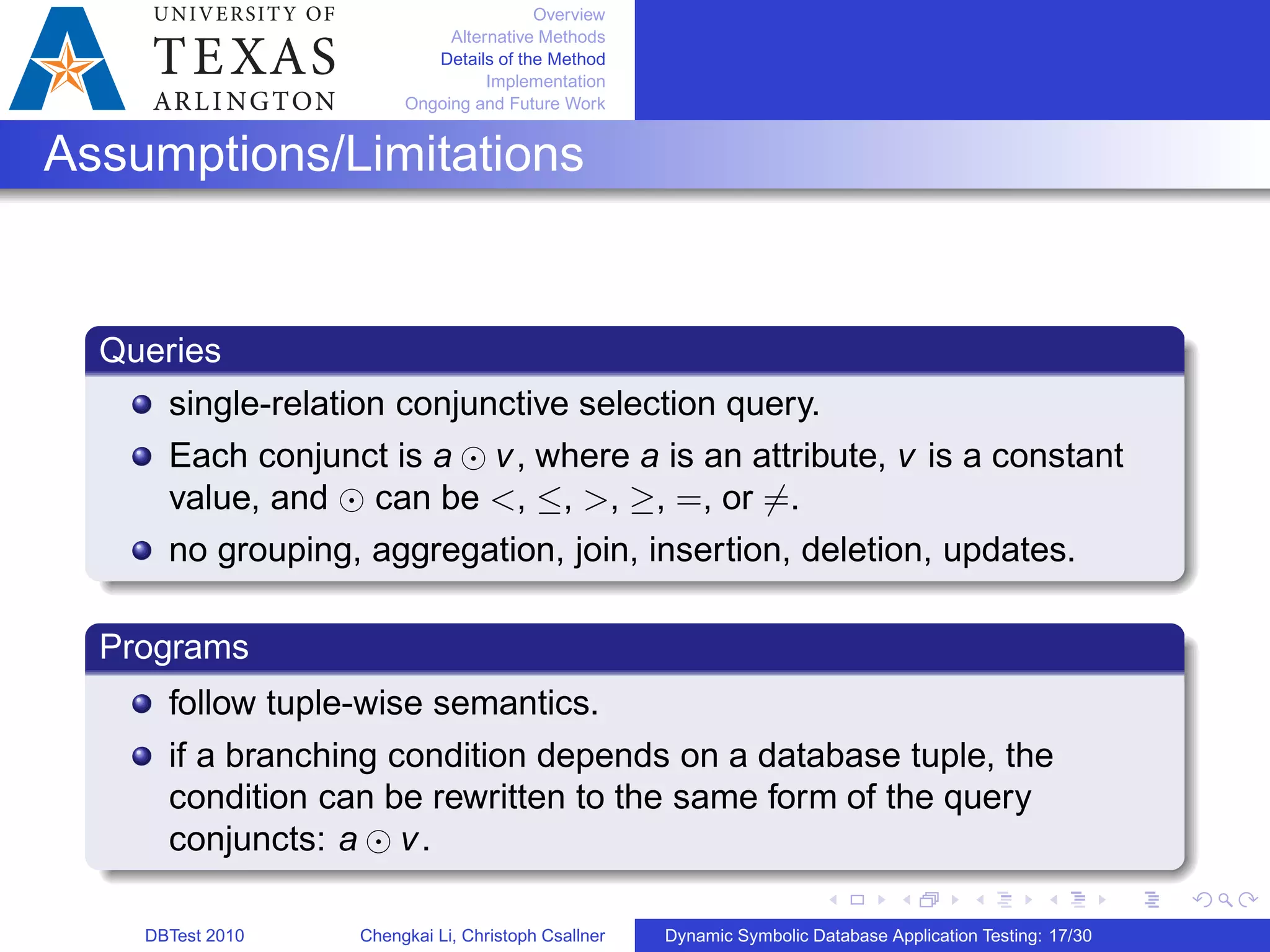
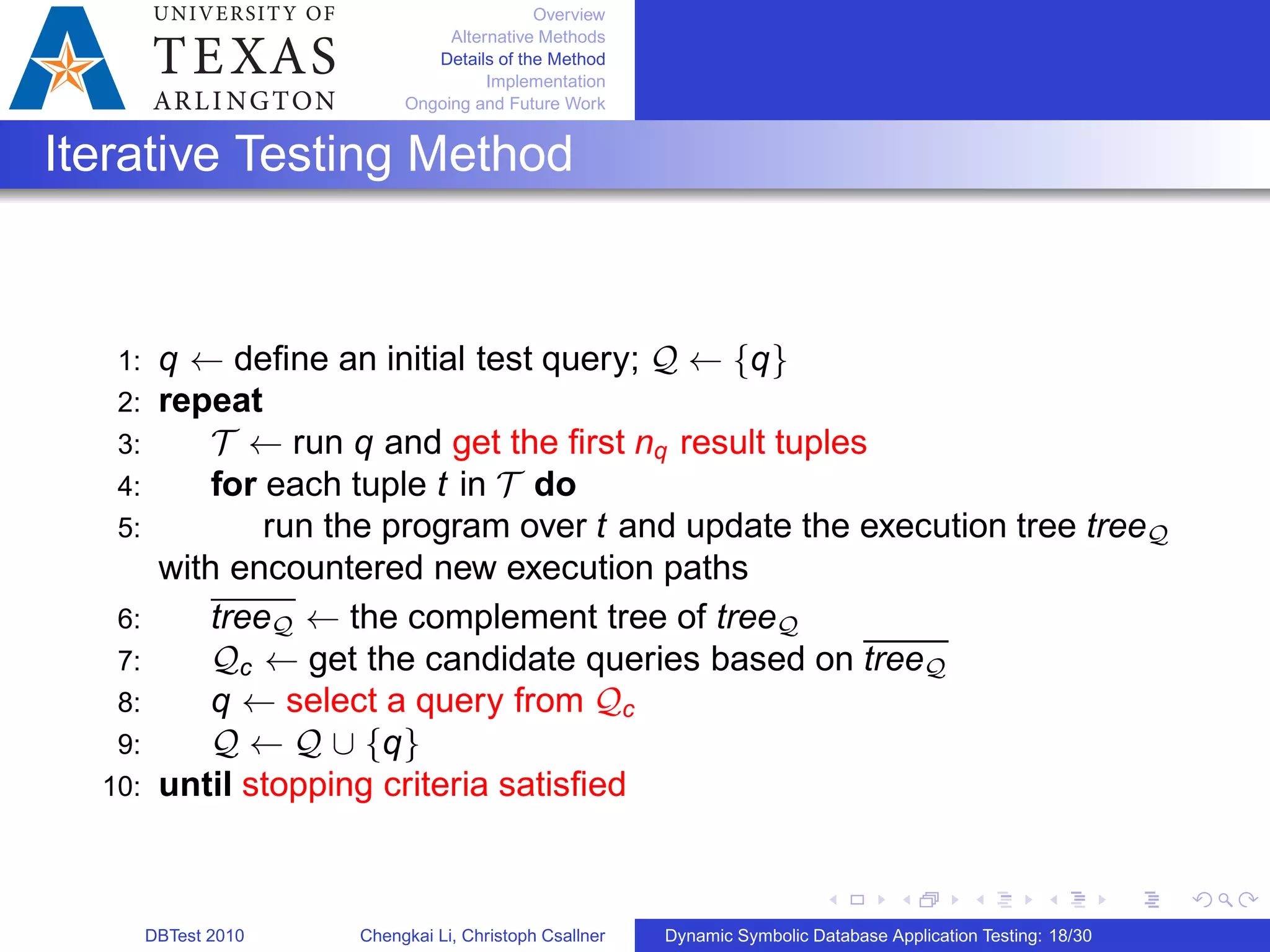
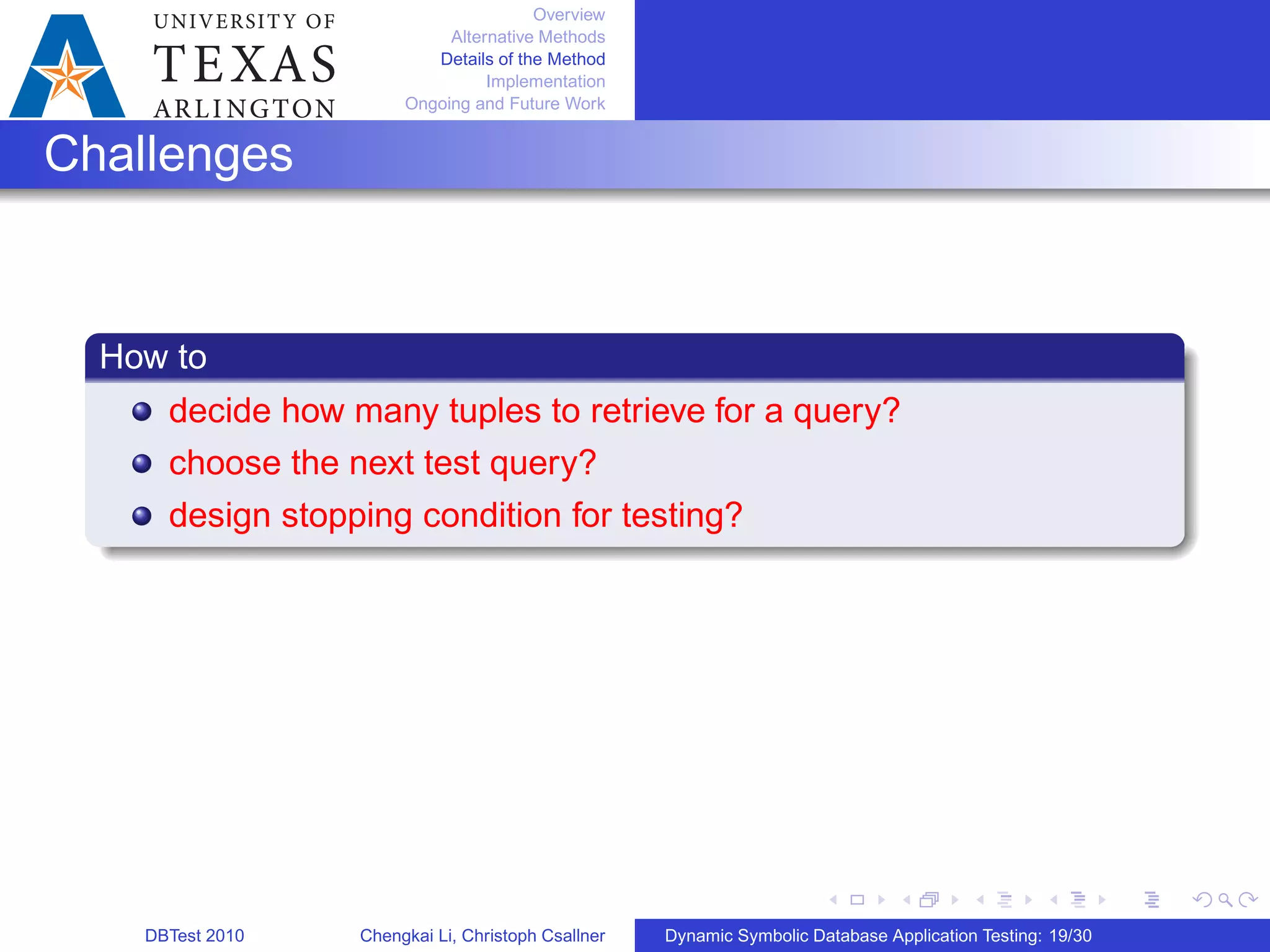
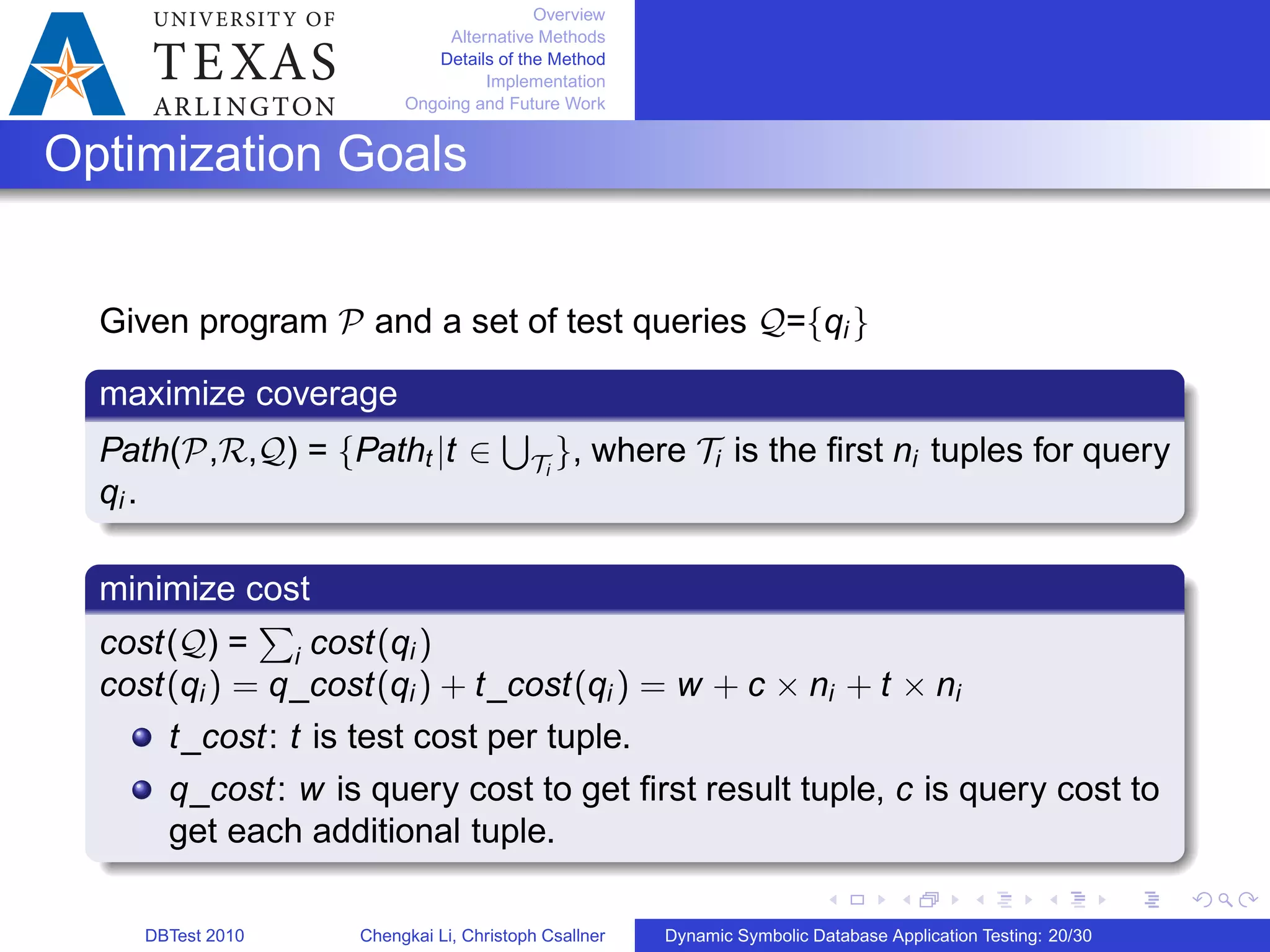
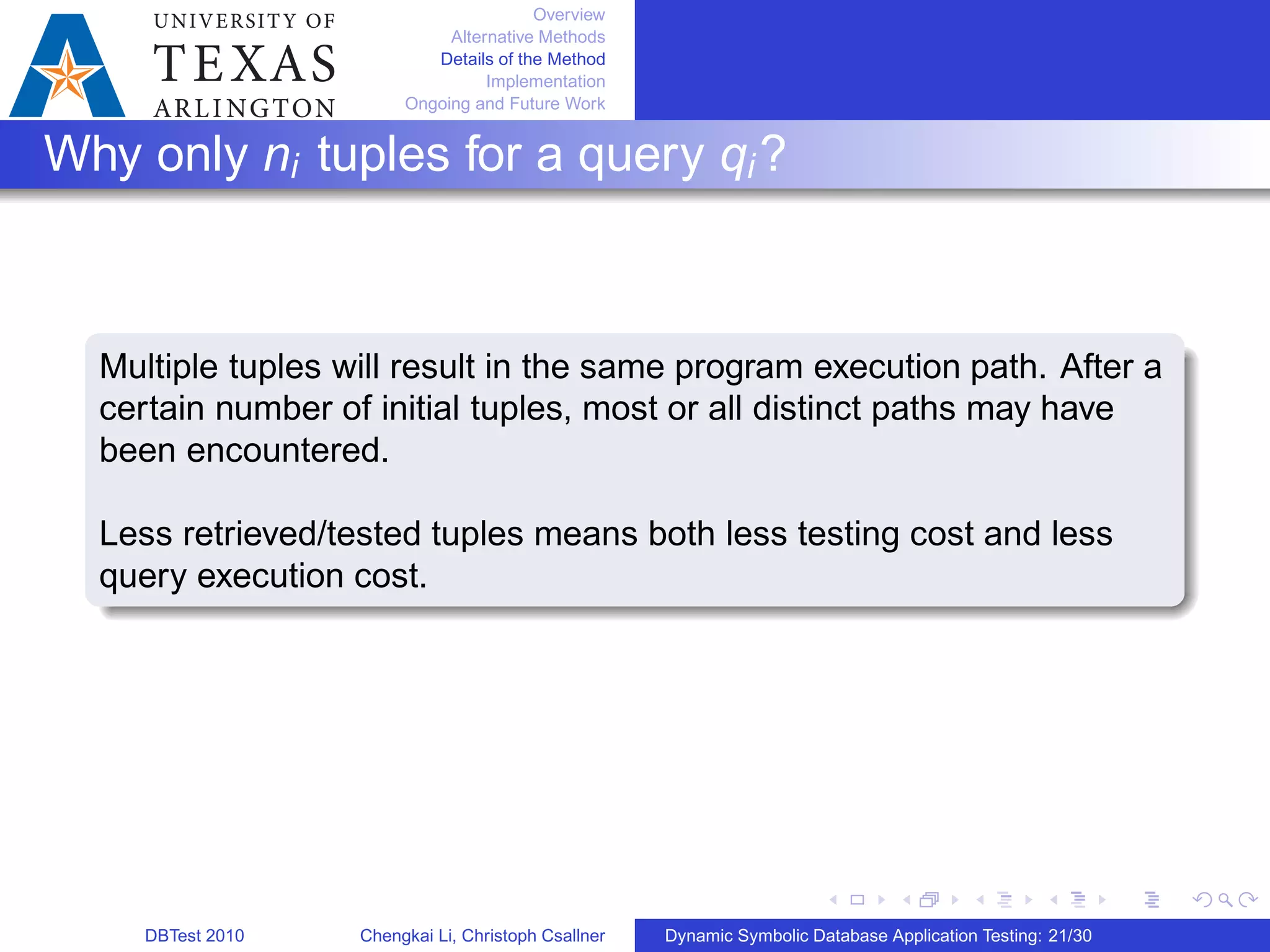
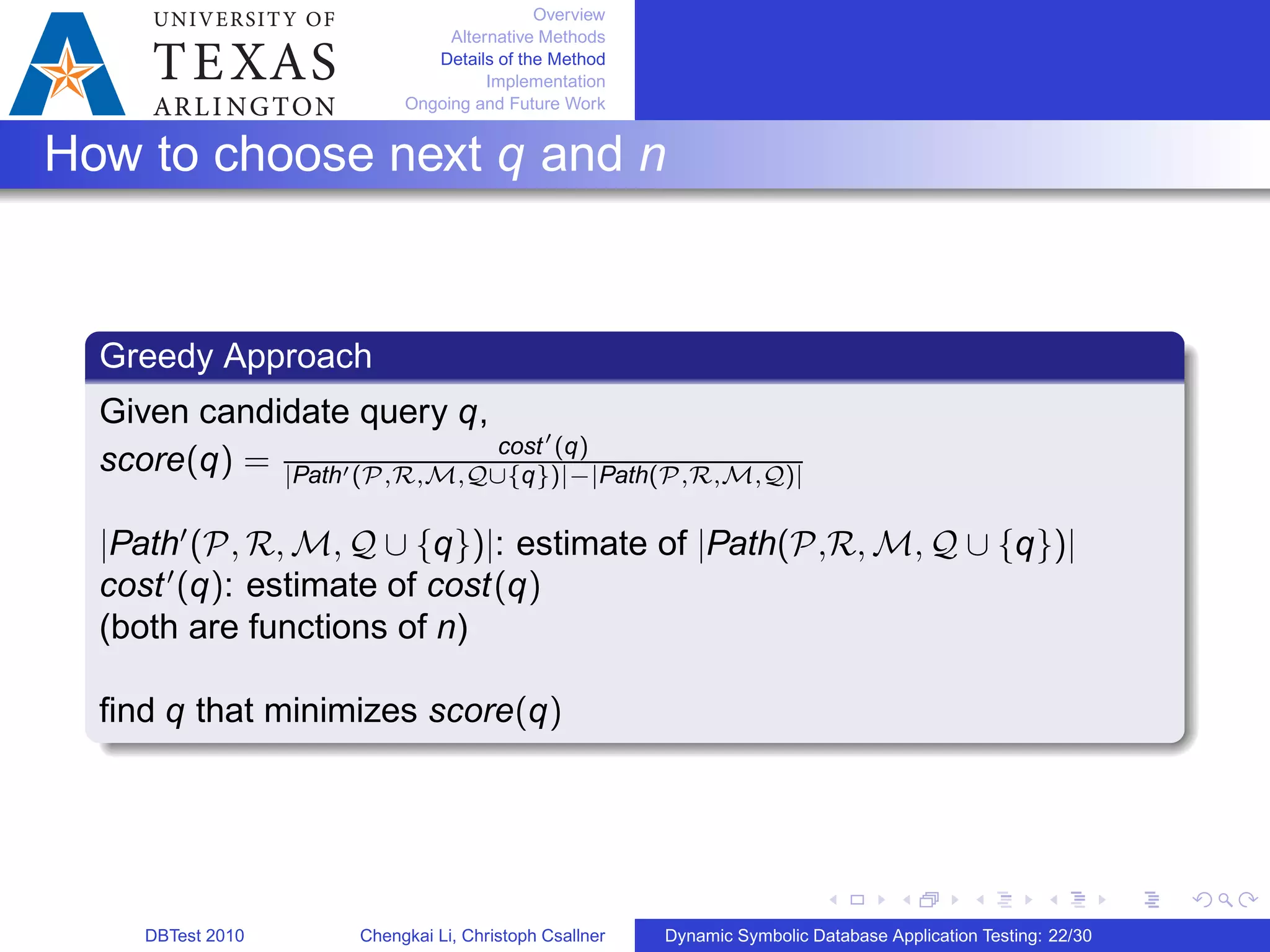
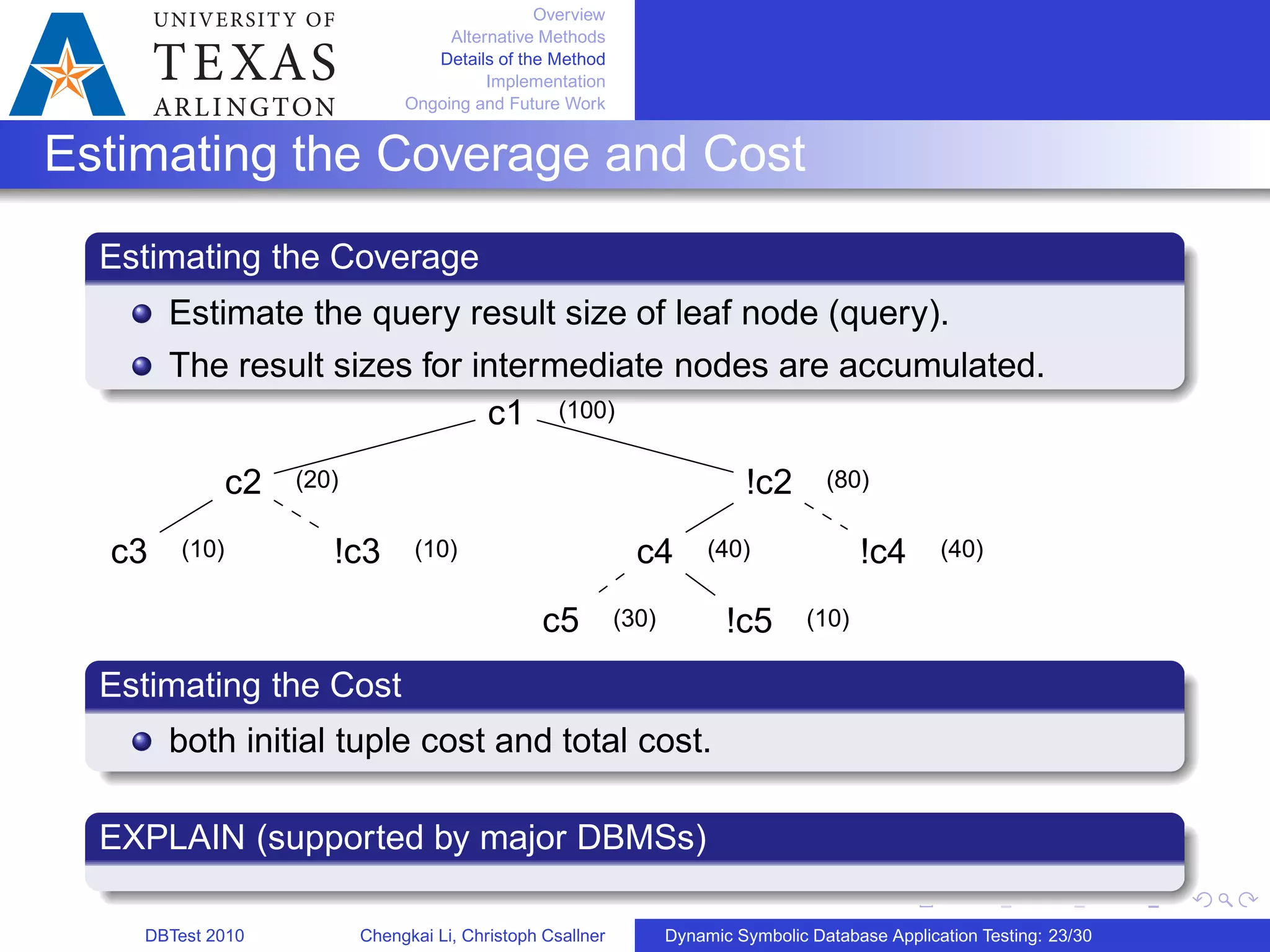
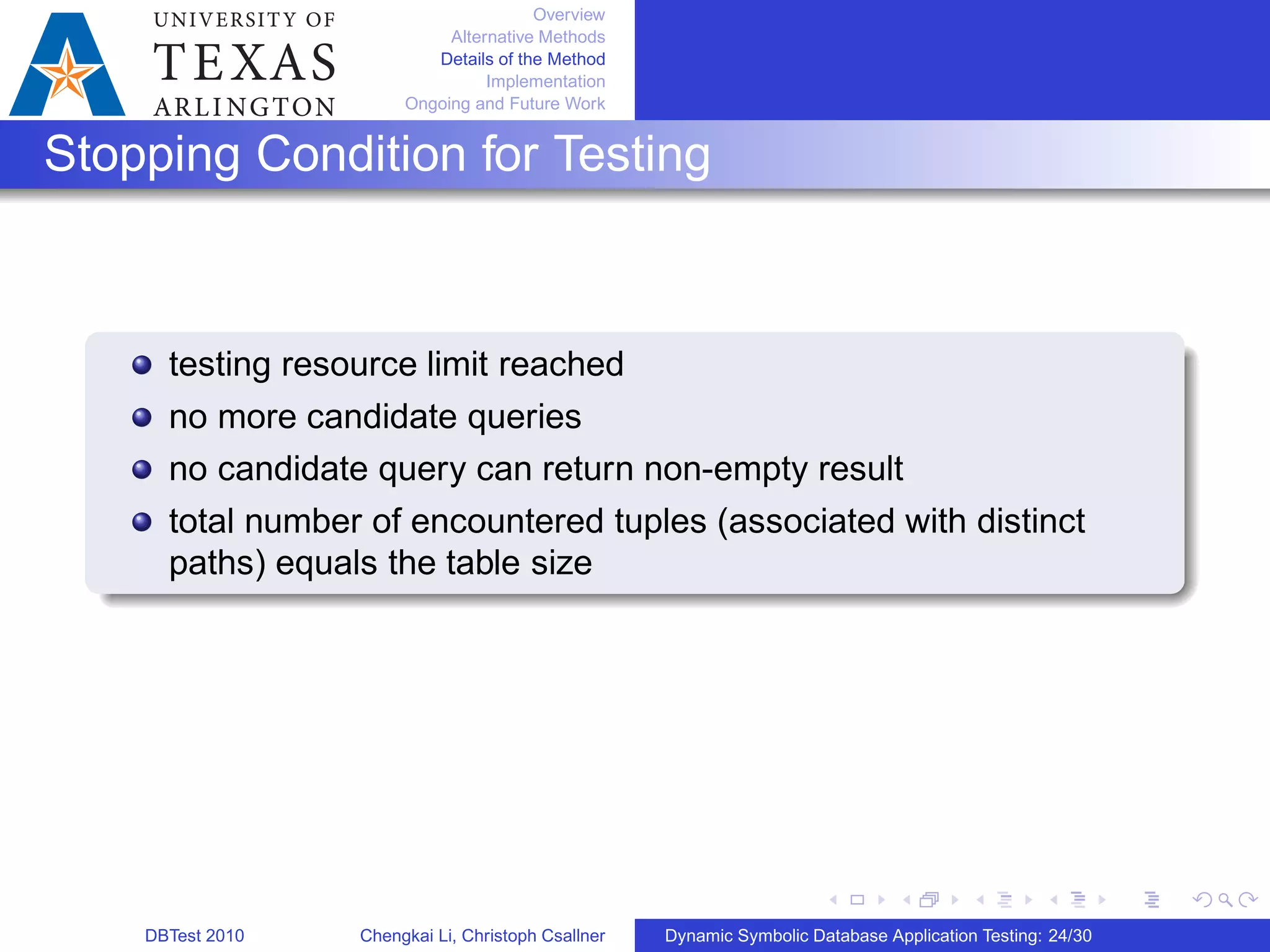
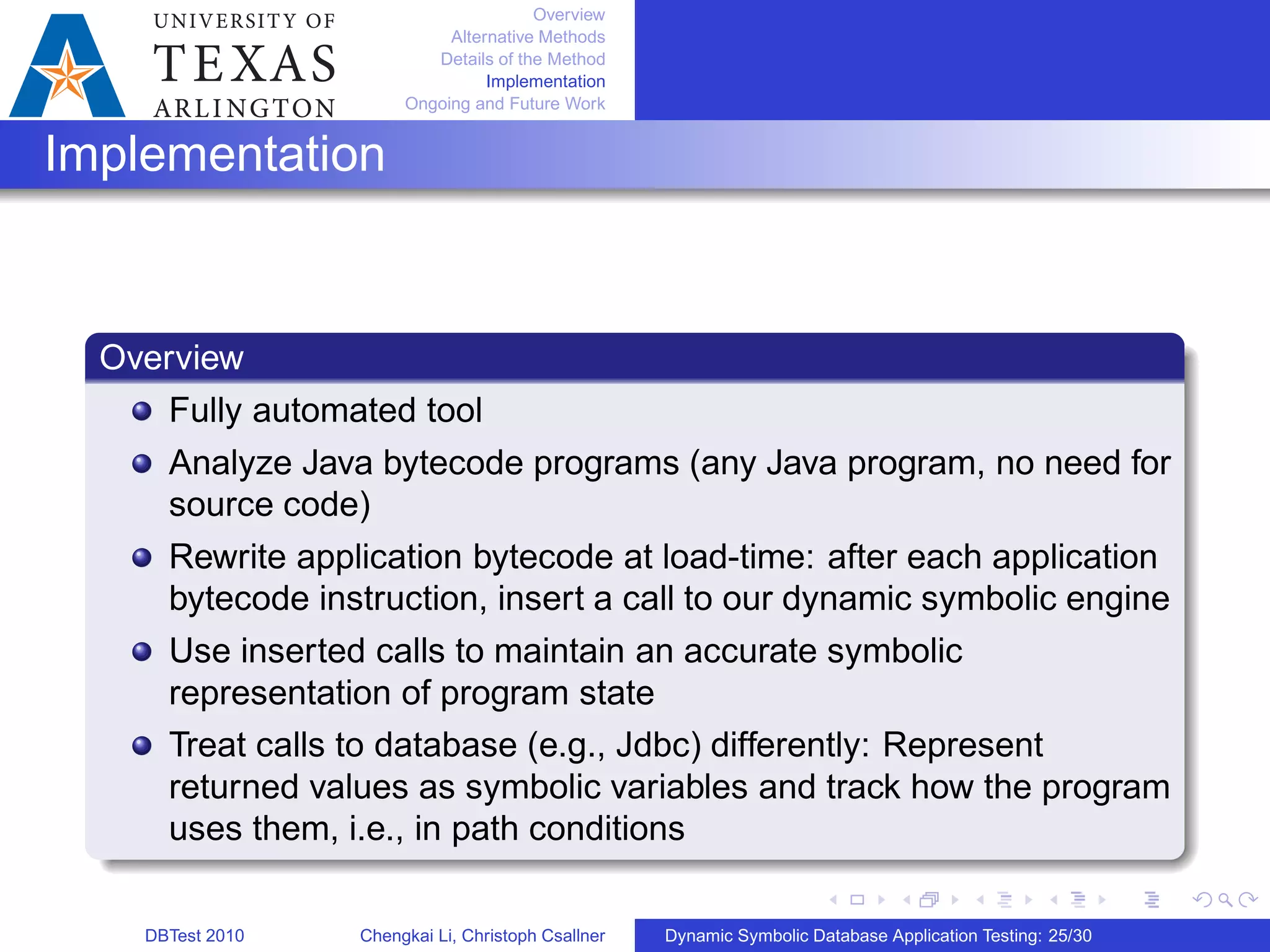
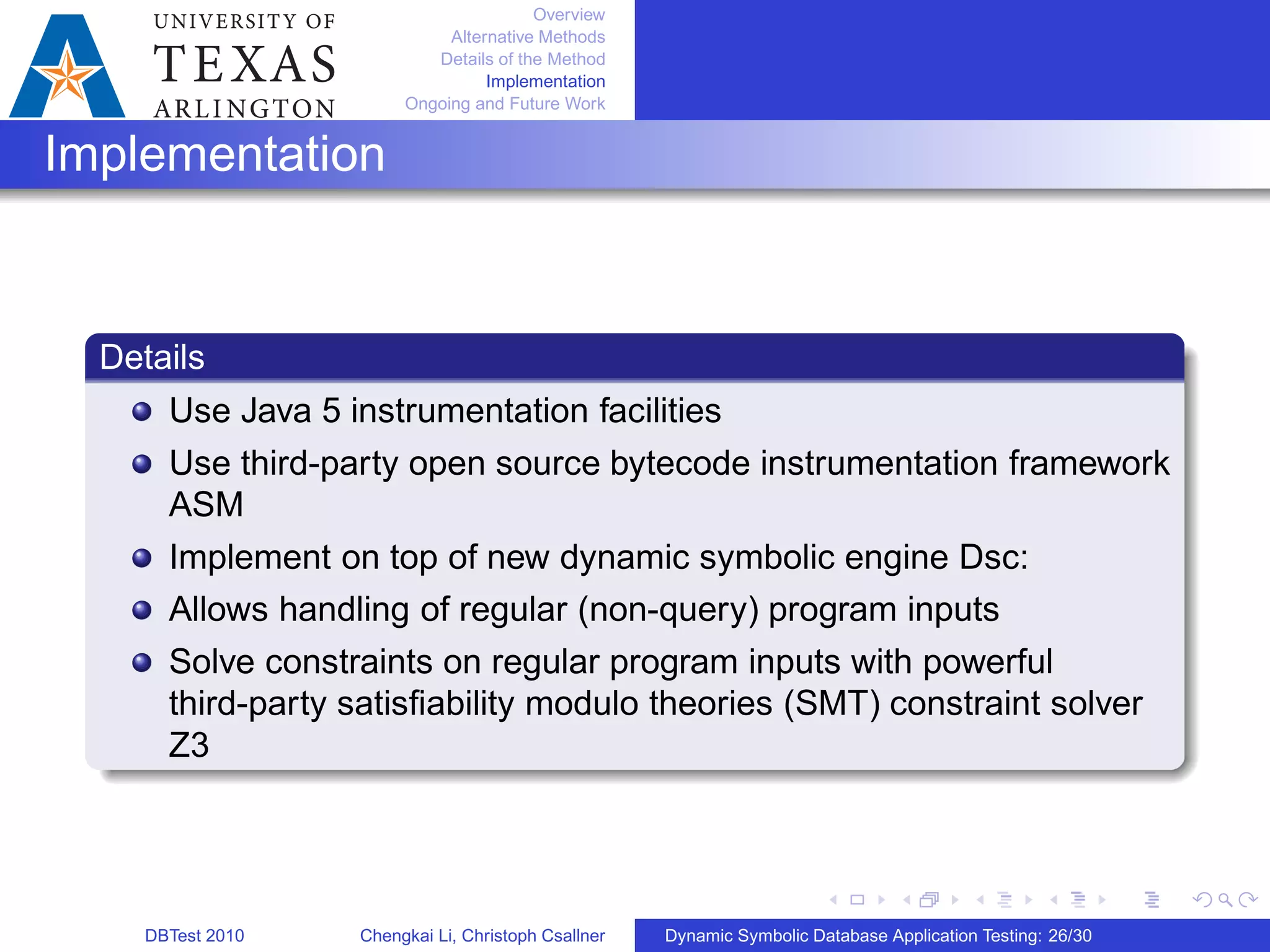
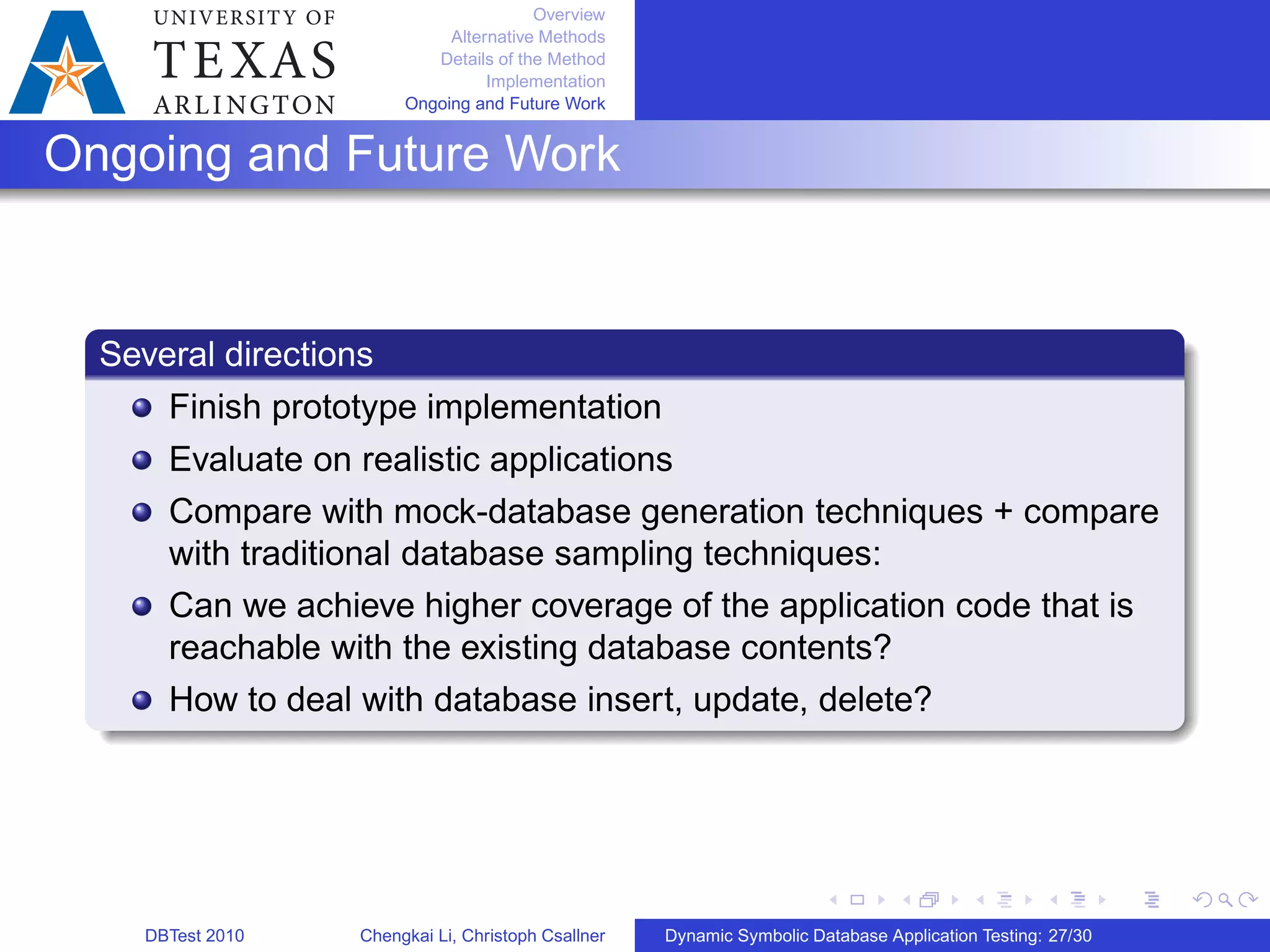
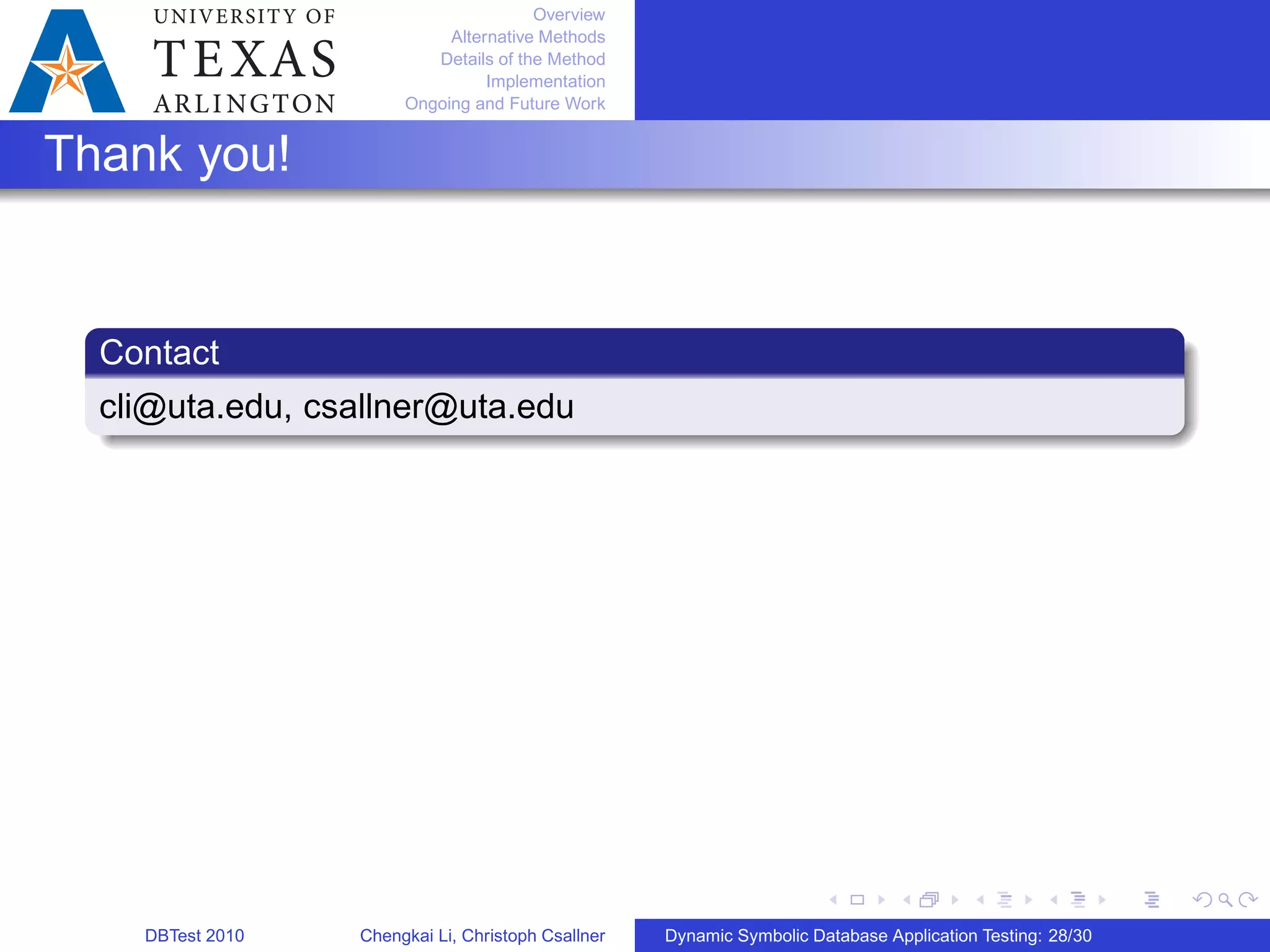
![Overview
Alternative Methods
Details of the Method
Implementation
Ongoing and Future Work
References
Dynamic Symbolic Execution Systems
Dart: C programs, by Godefroid et al. [PLDI’05]
jCute: Java programs, by Sen et al. [CAV’06]
Klee: C programs, by Cadar et al. [OSDI’08]
Pex: .Net programs (C#, etc.), by Tillmann et al. [TAP’08]
Database application testing via mock database generation
jCute extension: Java programs, by Emmi et al. [ISSTA’07]
Qex (Pex extension): .Net programs (C#, etc.), by Veanes et al.
[ICFEM’09]
DBTest 2010 Chengkai Li, Christoph Csallner Dynamic Symbolic Database Application Testing: 29/30](https://image.slidesharecdn.com/dbtest-dbtest10-cli-jun10-190922213657/75/Dynamic-Symbolic-Database-Application-Testing-29-2048.jpg)
